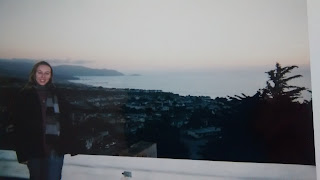December 2, 2004. It’s shortly
before 8am in Sumatra, Indonesia and the ground shifts dangerously. A
devastating 9.15 earthquake rips through the Indian Ocean 150km away causing
the seabed to rise by several meters. Thirty kilometers of water rise as
tsunamis to pound mercilessly across coastlines in thirteen countries in a
series of waves as high as ten meters in some areas. Over 230,000 people die
and millions are left without homes and livestock; most are found in Indonesia,
Thailand, Sri Lanka, and India (Environmental Justice Foundation,
2006, p. 3) .
Thursday, September 22, 2016
Thursday, September 15, 2016
Environmental Science: Water Wars
 |
| Pacifica, California overlooking the Pacific Ocean. |
Hearing the words ‘shadow program’ one might think of secret governments or mutated super men, but in California and twenty-three other states, the term applies to a water usage program that’s much scarier. Back in the 1980s the EPA started “an underground disposal program that allows toxic substances to be disposed of in nearly 700,000 waste wells across the country”
Subscribe to:
Comments (Atom)
